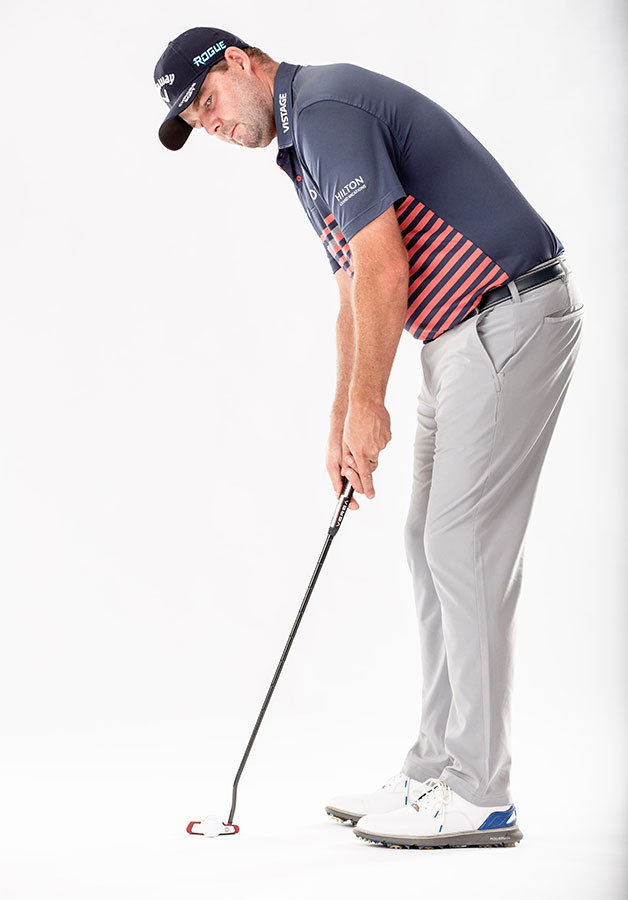Green-reading books are obviously an important part of what we do but I prefer to take a more visual approach when we get to the green. During my time at the Victorian Institute of Sport, we participated in a green-reading seminar with the coaches. My coach Denis McDade knows I’m very much a feel putter so he used visual cues to help me read the break.
Here are some simple visualisation techniques I use to determine the line I need to start my putts on.
 Feel The Flow
Feel The Flow
It’s 17 years ago now, but I remember clearly Denis literally pouring a bottle of water onto the green to demonstrate the break. Maybe I shouldn’t but that’s something I still do in practice rounds from time to time.
If I have an uphill putt, I picture pouring a bottle of water at the hole and visualise where the water is going to run. If the putt is downhill, pour the water at the ball and picture where it’s going to run.
Once I have decided how much I think the putt is going to break, I’ll pick a spot on a dead straight line and putt to that. It might be five feet to the left of the hole or just outside the right edge, but at that point I’m simply trying to hit a straight putt and let the break do the rest.
Dial It In
 Despite what you might think, the centre of the hole is not always at the front of the cup. Depending on how much break there is, the middle of the hole will move.
Despite what you might think, the centre of the hole is not always at the front of the cup. Depending on how much break there is, the middle of the hole will move.
When I’m trying to work out where the centre of the cup is, I like to picture the hole as a clock face. If I’m trying to make a left-to-right putt, I might imagine the ball rolling in at 7 or 8 o’clock and on the right at 4 or 5 o’clock. There are greens at Augusta National that break six feet from six feet away so there you have a lot of putts that go in at 3 or 9 o’clock.
If you can visualise the true centre of the cup there is a far greater chance of the ball falling into the hole.
Speed Reading
Along with picking the right line, speed is the most important aspect to making putts. The faster the greens, the more it will break.
Amateurs I play with in pro-ams always under-read the break because the greens we play on tour are generally so much faster that what they are used to.
And remember, a downhill putt will always break more than one back up the hill.
– Marc Leishman spoke with Tony Webeck




